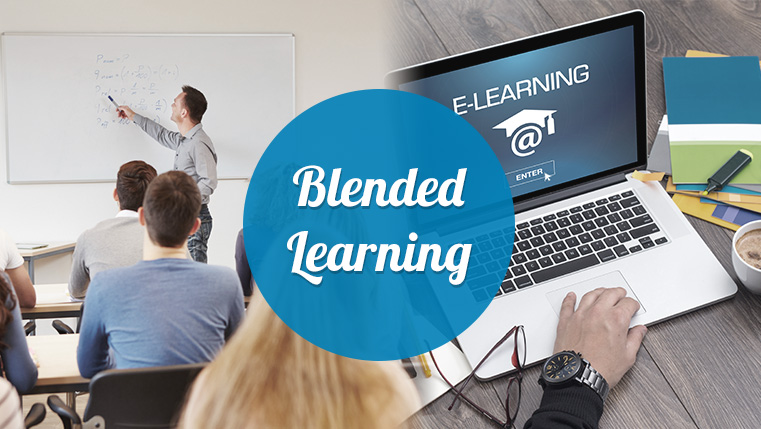3 Noteworthy Tips to Overcome Common L&D Mistakes Effectively

In the past, L&D was a one-way street. The company had the content, and the employee would simply consume it. But today, learning is more interactive, with employees able to provide feedback and input on what they want to learn. There are many challenges that companies face when trying to implement an effective L&D program, and they might end up making some common mistakes. One of them can be the lack of learning strategies or employees not being able to retain what they learn. In this blog, we will discuss some tips for overcoming various L&D mistakes and engaging your employees in learning new skills or improving their current skill sets.
Some Common L&D Mistakes Made by Companies
- Providing courses with the “one-size-fits-all” narrative.
- Overlooking the impact of visuals in an eLearning course.
- Failing to incorporate interactive and engaging assessments.
- Underestimating the importance of soft skill development.
- Ignoring the skill gap among employees.
3 Noteworthy Tips to Overcome Common L&D Mistakes Effectively
1. Identify Learner Preferences and Incorporate Multiple Learning Styles
More than half of the overall corporate workforce across the world is comprised of millennials and gen Z, so limiting their learning to one or two ways would only engage a small percentage of learners. To ensure your training is productive for the majority of your workforce, L&D pros need to figure out the different learning styles preferred by modern learners. It’s quite obvious that different people have different interests so identifying their preferences and reshaping their training around them will instigate the learning culture within the organization more effectively. There are 3 types of content, that can be delivered to match the preferences of the modern workforce, they are-
Visual Content
Learners who prefer visuals tend to have the information written somewhere to grasp it. Instead of vocally telling them any sort of statistics and data, they remember more accurately if they see the same data in the form of a graph, chart, or any other personalized infographic. Microlearning modules inclusive of videos, content slides, and flashcards will help them effectively for knowledge retention. Since this lot prefers visual content, considering scenario-based eLearning to let them witness any real-life situation play out virtually can be a good choice as well, especially if the learner is a sales rep or works in customer support.
Discover the secrets of scenario-based learning in detail with this free webinar recording.
Auditory Content
Sometimes, visuals just aren’t remembered by people, but words they hear definitely get stuck in their heads, and their verbal preference should not be overlooked while they are at their job training. The content can be a set of instructions, a theoretical lecture, or a simple information chunk, the learners prefer it to be verbal rather than written or displayed. Strategies such as virtual Instructor-led training (VILT) and microlearning modules such as audiobooks and podcasts can turn out to be most useful for individuals having such preferences. Apart from learning verbally, they can also engage in live discussions and ask questions to receive answers verbally, enhancing their knowledge retention.
Kinesthetic Content
Anything that is related to an individual’s physical movement can be considered kinesthetic, so any sort of training where the learner can understand things through a practical activity or imitation is called kinesthetic learning. Learners who prefer this type of training like to spectate everything first-hand through a scenario or perform trials in a simulation to get the most out of their training.
L&D pros can incorporate the use of AR and VR devices for some parts of their training to grasp their interest to a great extent because they get to experience the various tools and machinery in a virtual sandbox environment. Here, they can make as many mistakes as they want, and learn from each of their mistakes, to attain perfection in a risk-free environment. One of the best examples of simulation training can be the aviation industry, they use a flight simulator to explain the basics of flying an airplane and the pilots can practice their flight to perfection in the simulation.
2. Try to Mix & Match Different Training Formats to Create a Perfect Blend
As we discussed right now, people have different preferences but you cannot just create personalized training formats to train a specific lot if the quantity of learners is huge; too much work, isn’t it? To save you from the hassle of creating different training sessions and various sorts of content and delivering them to the workforce, create a training program that is a blend of multiple relevant strategies. Blended learning will help everyone to find something useful and engaging for them, while they can still try to adapt to other things not so interesting for them. If everyone gets an equal opportunity to learn in their preferred way, it would improve knowledge retention for them collectively.
To witness behavioral change within the employees of an organization, your training should be relevant for the modern workforce. Incorporating multiple strategies to create an effective blended learning program will help the learners of each type to stay motivated toward their learning and development session, which will eventually boost their productivity on the job, causing the companies to benefit from their employees’ enhanced performances.
3. Analyze and Minimize the Employee Skill Gaps
Identifying the skill gaps among the employees with the help of advanced learning analytics and a detailed knowledge-gap analysis report will help the organizations come up with the best possible solutions to help the employees stand on equal ground. Here are the 5 ways L&D can minimize existing the skill-gaps among the workforce-
- Revise your training goals and align them with the business training goals.
- Design eLearning courses that are learner-centric for impactful training.
- Organize remedial training sessions for the employees lagging behind others.
- Decide your key performance indicators (KPIs)
- Personalize employee assessments to maximize knowledge retention.
- Promote employee reviews and feedback.
Parting Thoughts!
Knowledge Retention is the key to productive employee performance and to enhance it, L&D teams should focus more on learner preferences as the blog already explains. Implementing a blended learning program, as previously discussed, can help you deal with multiple preferences successfully because all types of learners will eventually have something for them, making their training flexible and motivating. Here’s an eBook that consists of detailed insights about blended learning, and explains how it can boost an employee’s performance.





